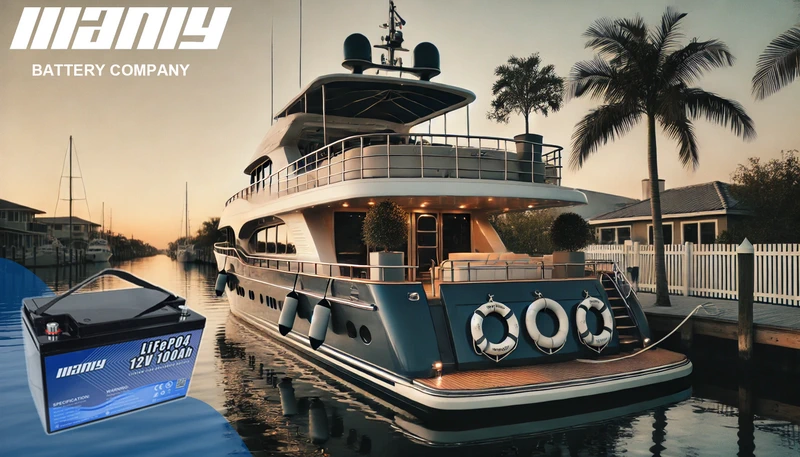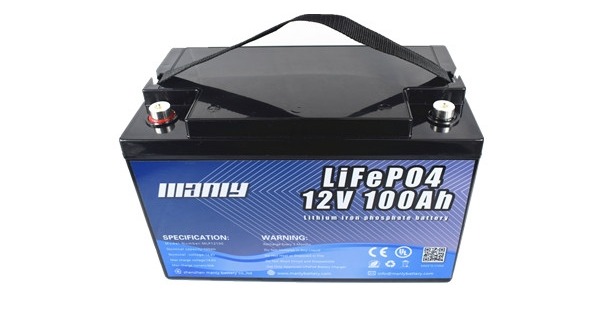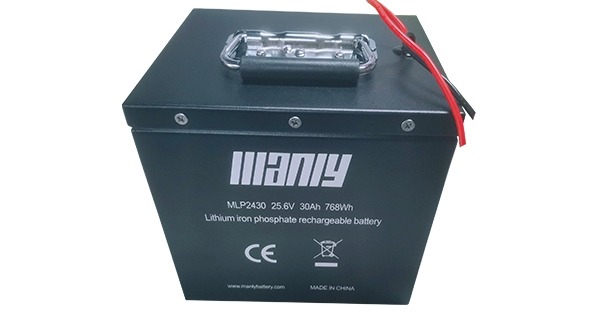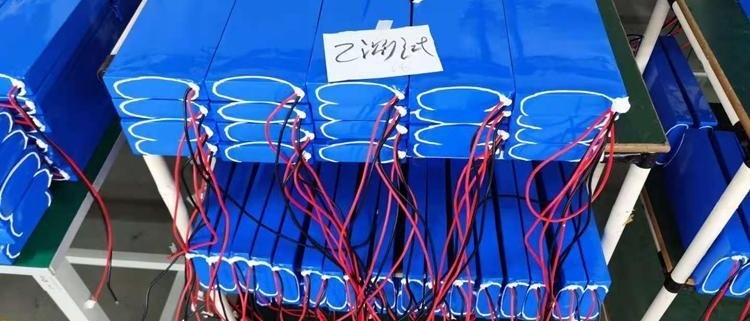What Type of Battery is a Marine Battery? A Detailed Breakdown
Table of Contents
- What Type of Battery is a Marine Battery? A Detailed Breakdown
- What is a Marine Battery?
- Different Types of Marine Batteries and Their Features
- The Best Choice: LiFePO4 Batteries for Marine Use
- Why LiFePO4 Batteries Are the Best Marine Batteries?
- Conclusion
- FAQ
- Hot Search
- How to choose an electric sightseeing car
- Intelligent cleaning robot market status
- 1000pcs 4S4P 12.8V 24Ah LiFePo4 Solar Street Light Battery
Maintaining a consistent and dependable boating experience depends on choosing the right marine battery. Whether you use a trolling motor, start your engine, or run electronics, the appropriate battery type will make all the difference. The several choices for batteries make many sailors find it difficult to choose the right one.
This article will break apart lead-acid, AGM, gel, and LiFePO4 batteries as well as other types of marine batteries. You will learn every type in great depth, including its benefits, drawbacks, and optimal uses. By the conclusion, you will understand the reason LiFePO4 batteries are the best fit for marine applications.
What is a Marine Battery?
Designed especially to withstand adverse sea conditions, a marine battery is Unlike automobile batteries, which only provide short bursts of electricity to start an engine, marine batteries must deliver constant power for lengthy durations while tolerating vibrations, dampness, and temperature variations.
- Usually driven by its intended use, marine batteries are categorized:
- The starting battery runs the boat motor. It gives a brief, sharp boost but lacks long-term vitality.
- Deep-cycle batteries run constantly for lights, fish finders, and trolling motors among other equipment.
- A dual-purpose battery sometimes performs worse than dedicated beginning and deep cycle batteries, even if it aims to combine two uses.
These classification indicate the use of a marine battery, although the most important factor influencing battery performance is battery chemistry. Chemistry of a battery determines its general performance, longevity, efficiency, and maintenance requirements.
Different Types of Marine Batteries and Their Features
The several kinds of marine batteries are listed below, together with their characteristics:
Lead-Acid Marine Batteries
Lead-acid batteries have been used in marine conditions as they have been rather competitively priced and widely available for decades. These batteries chemically react with lead plates and sulphuric acid to generate power.
Flooded Lead-Acid (FLA) Batteries
Flooded lead-acid batteries are the most classic form. They demand consistent maintenance, including topped off distilled water. They are heavy, require ventilation, have a shorter lifetime than other battery types even if they are economically priced.
Sealed Lead-Acid Batteries
Lead-acid batteries sealed eliminate maintenance needs and are spill-proof. Two most widely used variants that improve performance over typical flooded lead-acid batteries are AGM (absorbed glass mat) batteries and gel batteries.
Advantages of Lead-Acid Marine Batteries
Lead-acid batteries are reasonably cheap and rather numerous. Their great starting current makes them worth using for engine cranking.
Disadvantages of Lead-Acid Marine Batteries
Lead-acid batteries need regular maintenance, weigh a lot, and charge slowly. Usually running for two to four years, their lifetime is short; they break down upon discharge below 50% capacity.
AGM (Absorbed Glass Mat) Marine Batteries
AGM batteries are spill-proof and maintenance-free by absorbing the electrolyte using fiberglass mats, therefore improving traditional lead-acid designs.
How do AGM Batteries Work?
By immobilising the electrolyte inside the glass mat, AGM batteries reduce the possibility of leaking and hence maximise power efficiency. Since this structure lets for better resistance to vibrations and faster charging periods, AGM batteries are a more durable replacement for flooded lead-acid batteries.
Advantages of AGM Marine Batteries
Zero maintenance and faster charging than other lead-acid models describe AGM batteries. Their lifetime is between three and six years, and they have more resistance to deep discharges.
Disadvantages of AGM Marine Batteries
AGM batteries remain heavier than lithium alternatives even with their superior performance. On a tight budget, they also appeal less to boaters since they cost more than flooded lead-acid batteries.
Gel Marine Batteries
Gel batteries use liquid electrolytes from a silica-based gel. Less leaks and greater deep discharge performance are made possible by this chemical composition.
How do Gel Batteries Work?
The gel-based electrolyte lowers chemical reactions, therefore reducing the possibility of overcharging or deep discharge. Applications needing constant, long-term power will find ideal use for these batteries.
Advantages of Gel Marine Batteries
Gel batteries resist high temperatures, maintain a longer lifetime than flooded lead-acid batteries, and require no maintenance.
Disadvantages of Gel Marine Batteries
The slow charging rate of gel batteries is its biggest drawback. Furthermore expensive than AGM and flooded lead-acid batteries are they are. Less forgiving than other battery kinds, overcharging can damage a battery permanently.
The Best Choice: LiFePO4 Batteries for Marine Use
The most intelligent and powerful marine batteries are LiFePO4 (Lithium Iron Phosphate). Unlike lead-acid batteries, which rely on chemical interactions between lead and acid, they offer constant and dependable power by means of lithium-ion technology.
Why LiFePO4 Batteries are Superior?
Among their most important benefits are LiFePO4 batteries’ extended lifespan. Lead-acid batteries run two to six years; LiFePO4 batteries can run ten years or more. Since they weigh up to 70% less than lead-acid batteries and are more easily handled, they also greatly improve boat performance.
Charging time offers still another major advantage. Five times faster charging of LiFePO4 batteries than with lead-acid batteries Unlike lead-acid batteries, which have to be kept above 50% charge, they also enable total discharges free from battery damage.
Are There Any Drawbacks to LiFePO4 Batteries?
The sole negative of LiFePO4 batteries is their starting cost. For seasoned sailors, however, they are the most affordable choice because of their long lifetime, fast charge times, and low maintenance needs.
Why LiFePO4 Batteries Are the Best Marine Batteries?
LiFePO4 batteries have long-term benefits above all other battery models, even if their initial expense makes many sailors unwilling to switch. Boats carrying LiFePO4 batteries had 30% longer running lifetime on electronic systems and trolling motors, according a study by marine engineers.
Savings in weight also improve performance. LiFePO4 technology lets a boat greatly reduce the weight of its battery, therefore enhancing fuel economy and general maneuverability. Boaters looking for dependability, fast charging, and long-lasting performance would best invest in LiFePO4 batteries.
Conclusion
The perfect sailing voyage depends on selecting the right marine battery. Though lead-acid, AGM, and gel batteries are still somewhat popular, none give the efficiency, lifetime, and long-term savings LiFePO4 batteries offer.
LiFePO4 batteries from MANLY Battery provide the finest answer if you want a dependable and high-performance marine battery. Their innovative lithium technology guarantees exceptional energy economy, therefore assuring that your boat keeps running without the trouble of regular replacements.
For premium-quality marine batteries, visit MANLY Battery today and experience the next generation of marine power solutions.
FAQ
1. Is a deep cycle battery the same as a marine battery?
Let’s clarify: a deep cycle battery and a marine battery aren’t the same, although they have similarities. Here’s why:
A deep cycle battery provides a steady power flow over an extended period. It’s designed for applications that need consistent energy, like golf carts, RVs, or renewable energy systems. These batteries are built to handle repeated discharges and recharges without losing performance.
On the other hand, a marine battery is specifically made for boats. However, marine batteries come in two types: starting and deep cycle. A starting battery delivers a quick surge of power to start the engine, while a deep cycle marine battery powers your boat’s electronics and other devices.
So, while some marine batteries are deep cycle, not all deep cycle batteries work as marine batteries. If you’re choosing a battery for your boat, ensure it’s designed for marine use to get the most reliable power.
2. What are the three types of marine batteries?
Marine batteries come in three main types, each serving a different purpose. Understanding their roles helps you pick the right one for your boat:
- Starting Batteries: Starting batteries provide a quick burst of power to start your engine. They’re all about delivering a high-energy jolt for a short time. These batteries are not designed to power other devices, so they focus only on getting your engine running.
- Deep Cycle Batteries: Need power for your boat’s electronics, trolling motor, or other accessories? Deep cycle batteries are your answer. They deliver steady, long-lasting energy and can discharge and recharge multiple times without losing capacity. Perfect for extended trips or when you’re off the grid!
- Dual Purpose Batteries: As the name suggests, dual purpose batteries combine the functions of both starting and deep cycle batteries. They give you enough power to start your engine and supply energy to your accessories. They offer versatility but may not provide as much power as a dedicated starting or deep cycle battery.
Hot Search
Marine Lithium Battery Battery Manufacturer
Hello
First, to consider the safety issues
Electric sightseeing car because we all think the operation is easy, so we all casually operate, after all, this car is the steering wheel driving car, there is a steering wheel and speed with the problem, so without professional training also left safety hidden danger. If the electric sightseeing car reaches 4 or more should refer to the manufacturer’s standards to establish a special charging station to ensure charging safety.
Second, to pay attention to energy-saving issues
Through our industry internal measurement, electric sightseeing car running electricity cost between ¥ 0.15 ~ ¥ 0.2.
Third, to pay attention to maintenance costs
In the use of frequent charging units, according to the ideal state of a set of batteries after 1 year of normal use battery capacity to reduce 30%; generally in 1.5 years – 2 years need to update the battery group regular manufacturers price in ¥ 10,000 or so / group, another motor, electric control also exists consumable parts need to be replaced frequently.
Fourth, to adapt to the use of the environment
Use of electric sightseeing car you have to consider the road, slope, driving mileage, business season another battery pack and other issues; because the battery car according to the size of the motor power great climbing degree between 5 degrees -9 degrees, driving mileage 60-90 km (excluding battery decay), if the peak season battery can not keep up (now charging a need 6-8 hours) very much more than a few groups of batteries, which is lower than the cost of a few cars, but the battery pack is not easy to change, usually also to the backup battery pack often maintenance charging.
V. To pay attention to technical issues
So far there is no perfect battery to provide power for the electric car, so the major car manufacturers have not formed a pure electric car mass production. With the perfection of electric vehicle technology, the related electric vehicle drive and control system is constantly improving and rising, which is to consider the possibility of core components to be replaced and rising later.
Six, to consider the after-sales problem
After-sales is timely, there is no don’t repair the product, buy a car to consider both the market repair talent is complete, but also to consider the product parts are common and easy to buy, such as whether you can buy in the local auto parts market, repair outlets exist, only then your cost of use will be low.
MANLY Battery is a professional lithium battery manufacturer, mainly includes the lithium electric sightseeing car battery, if you have the lithium electric sightseeing car battery request, just email MANLY Battery here at [email protected] to get a further communication.
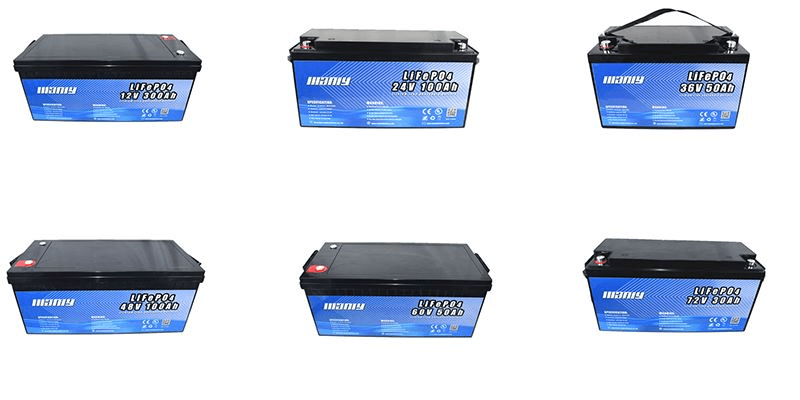
Cleaning robots have been red-hot in the domestic market in just a few years, with sales of 565,300 units in 2013, growing to 3,069,600 units in 2016 and expected to sell nearly 8 million units in 2022; sales of 10,671 million RMB.The following is an analysis of the current state of the cleaning robot market.
Cleaning robot development status
With the progress of science and technology and social development, especially affected by the accelerated pace of life and increased work pressure, people hope to be more relieved from the tedious daily household cleaning affairs. This is undoubtedly the market demand for cleaning robots to enter the home.
Cleaning robots, also known as intelligent vacuuming robots or automatic vacuum cleaners, are currently the most challenging and popular research and development topic in the field of household appliances, but with great difficulty. For example, Japan’s Hitachi has been researching and developing since the late 1980s, but no mature products have been released yet; other Japanese Panasonic, Korean Samsung, LG, Hanool Robotics, Swedish Electrolux, Dutch Philips, German Karcher, British Dyson, Australian Floorbotics, American Eureka and iRobot, Evolution Robotic, Taiwan’s United Teng Electronics, and Taiwan’s United Teng Electronics. Evolution Robotic, Taiwan LianTeng Electronics and other companies are or have been actively developing and providing some samples or small batch products. Currently, the domestic market has dozens of cleaning robot brands, but the percentage of locally established cleaning robot companies with core R&D capabilities is not high.
In recent years, cleaning robots are becoming popular at an alarming rate, and the market is developing very rapidly. In the previous development stage, cleaning robots mainly focus on improving sweeping efficiency. At this stage, cleaning robots are bound to shift to the direction of development of intelligent core technologies such as multi-sensor fusion, navigation, and path planning after ensuring that they provide better cleaning results.
Cleaning robot market status
1, China’s sweeping robot industry started late, in the early stages of development
Compared with the international developed countries, China’s service robot industry started late and is still in the early stages of development. 2010 or so foreign sweeping robot products into the Chinese market, due to the high price, most consumers find it difficult to accept, and by the influence of living habits and consumer philosophy, most of the domestic population in indoor cleaning is still mainly using manual cleaning methods or vacuum cleaner equipment, so The penetration rate of sweeping robots in China’s cleaning appliances consumer market is not high.
2, China’s sweeping robot industry development speed is fast, the development prospects are good
Although China’s sweeping robot started late, but the development speed is fast, the future development space is larger. 2010 to 2015, with the national economy continues to develop, the per capita disposable income level continues to improve, the per capita housing area continues to increase, under the influence of urbanization, intelligent and other factors, sweeping robot is gradually accepted by the majority of consumers, especially by the younger generation of consumer groups. At the same time, with the progress of science and technology, the consumption concept of Chinese consumers is also changing, and the demand for intelligent products is gradually increasing. In addition, the fast-paced life brought about by urbanization has led to a reduction in people’s domestic work time, and the population structure has gradually developed toward aging, making the rigid demand for household robots more and more obvious. According to the statistics, the sales volume of China’s sweeping robots in 2013 was 565,300 units, which grew to 3,069,600 units in 2016 and is expected to sell nearly 4 million units in 2017; the sales volume of China’s sweeping robots in 2013 was 838 million yuan, and the sales volume in 2016 was 4,250 million yuan, and the compound growth rate of sales volume from 2013 to 2016 was 71.78%, sales are expected to be 5.671 billion yuan in 2017.
3, the rapid development of China’s Internet e-commerce platform, promoting the rapid growth of online sales of sweeping robots With the rapid development of China’s Internet e-commerce platform, more and more consumers adapt to and are keen on e-commerce platform shopping, and more and more businesses also shift from traditional offline sales to online sales. Nowadays, e-commerce platform makes consumers can understand the appearance, price and product features of products through online platform without leaving home, while the regular promotion activities of Tmall, Jingdong and other e-commerce platforms have promoted the online sales of various products. According to statistics, China’s offline sales of floor cleaning robots have been relatively stable in recent years, but online sales are growing faster, with offline and online sales of 390 million yuan and 450 million yuan respectively in 2013, and offline and online sales of 520 million yuan and 3.73 billion yuan respectively in 2016, and online sales of floor cleaning robots in China are expected to exceed 5 billion yuan in 2017.
In summary, the cleaning robot market is in a period of continuous development and growth. In order to continuously improve the user experience and fit the actual function of the demand, cleaning robots will continue to evolve and improve, to achieve the true meaning of intelligent cleaning robots. In the future, cleaning robots will enter the 3.0 era, and the next technological trends will be fusion-type sensing systems, enhanced intelligence, enhanced network services, and multi-machine collaboration and self-learning, MANLY Battery is a professional lithium battery manufacturer, most our lithium battery for Intelligent cleaning robot application, if you have any reuqirement on the lithium battery for Intelligent cleaning robot, you can email MANLY Battery at [email protected]
1000pcs 4S4P 12.8V 12V 24Ah LiFePo4 solar street light battery finished the production and ready to package, then send to Australia, many thanks for your trust and support, if any solar street light battery demand, please don’t hesitate to contact MANLY Battery, we are waiting for you.


